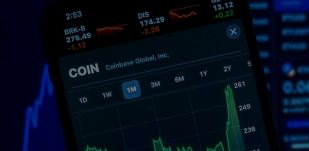What is a Routing Number?
A routing number is a nine-digit code that American banks use to identify themselves. Sometimes also called a Routing Transit Number (RTN) or American Bankers Association (ABA) routing number, they’re used on everything from paper cheques to automated and wire payments online, both domestically and internationally.
Routing numbers are needed because the US Federal Reserve Banks use them to process electronic transfers (called Fedwire transfers) and the Automated Clearing House (ACH) network uses them to process things like direct deposits, bill, salary and pension payments and other automated transfers.
If you have a US bank account, you’ll find your routing number on the bottom of any cheque (to the left of your account number) or in your account details within the secure area of your online bank. Routing numbers aren’t confidential so you don’t need to worry about keeping yours safe – in fact you can usually find your bank’s routing number with a quick Google search.
Need to make an international payment?
When do you need to use a routing number?
If you’re making a payment to or from a US bank account, you’ll need the routing number of that account to make it happen. If you’re sending a domestic transfer within the US, you’ll just need the routing numbers for each account. If you’re sending an international transfer to or from the US, you’ll need the US bank’s routing number and also, the SWIFT code.
Just to confuse things a bit, banks use different routing numbers for different types of transaction. This means the routing number printed on your cheque might not be the one you need for a wire transfer or Direct Debit, for example. For this reason, it’s always best to check the routing number with the bank before any transfer, as using the wrong one can seriously delay things.
The Clear Currency effect:
Keep it simple
America fair
Routing numbers are only for domestic and international transfers and transactions involving American bank accounts.
Check the type
Different types of transaction use different routing numbers, so always check with the bank before you make your transfer.
SWIFT
If you’re making an international transfer involving a US bank account, you’ll need a SWIFT code as well as routing number.
Access bank-beating currency rates
Related Articles
How to Mitigate Foreign Exchange Risk
Currency risk can have a significant effect on the efficiency and profitability of any international business. Each exchange rate movement affects how much you receive from sales and what you pay to suppliers.
Read more
Moving to Dubai from the UK: Checklist
You’re ready for a new life overseas and have decided you’re moving to Dubai. Now it’s time to consider the various costs involved, from your visa and accommodation, to health insurance, shipping your belongings and bringing your beloved pets along too.
Read more
Currency Outlook Quarter 1 2023
Clear Currency looks back at the performance of the US dollar, euro and sterling in Q4 2022, and assesses what might be in store for Q1 2023.
Read more


